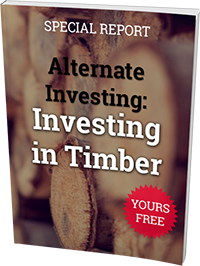Well, the numbers released today on China’s economic growth confirm what economists have long suspected: that the Chinese economy is finally slowing down from its breakneck pace of 10% annual growth. Of course, China’s 8.9% growth rate in Q4 still trumps the U.S growth rate of 1.8% by a country mile. But behind China’s slowing growth lurk deeper problems — and ones that question the fundamental sustainability — and credibility — of the “China Miracle.”
China: Extreme, Not Unique
For all of the claims about how unique China’s model of economic growth is, it’s really nothing new. It’s the same model that the Soviet Union used in the 1950s; that Brazil employed in the 1960s; and Japan repeated in the 1970s. This approach produces massive, headline-grabbing economic growth — until the economy gets crushed under the weight of oppressive debt and the impact of a massive misallocation of resources. China has simply taken this same economic model of development to the extreme. But the bad news for China is that the bigger the boom, the bigger the bust.
The primary driver of this model of economic growth is investment. Foreigners “ooh” and “ahh” at the Pudong skyline and the hundreds of airports built in even the smallest Chinese cities. The problem is that a lot of this investment is completely wasted. Evidence of this mal-investment in China abounds. Lightning-fast bullet trains are virtually empty, as are endless miles of highways. “China’s empty city” of Ordos continues to be empty — as does China’s biggest shopping mall. Even China’s iconic Olympic “Bird’s Nest” stadium stands unused and decrepit.
Here’s the irony. In China, such investment is taken as a sign of a dynamic economy. When this same kind of investment happens in the United States, it’s mocked as evidence of government waste mismanagement. Think of federal government-funded “bridges to nowhere” in Alaska. Or consider the $150 million John Murtha Johnstown airport, with three government-subsidized flights to Washington, D.C., per day. And how is it that Obama’s $800 billion of fiscal stimulus was all money down the sinkhole, while China’s $586 billion was invested with such precision and infinite wisdom? I just don’t believe that China’s philosopher kings are that much smarter than overpaid U.S. federal bureaucrats. China’s 2009 stimulus plan has only blown the real-estate bubble bigger and left the country with even higher levels of bad debts that will one day bankrupt China’s banking system — as it did in the late 1990s.
Second, can you trust Chinese statistics? I don’t. Maybe it is because I’ve had experience with looking at the way statistics are compiled in (former) Communist countries. There is an entire cottage industry in the United States that reports about how the U.S. government fudges its statistics. Imagine what goes on in China. The British financial press is now full of stories of how the United Kingdom’s “Peter Lynch” — Fidelity’s Sir Anthony Bolton — has gotten his head handed to him running an investment fund in China. It turns out that Bolton relied purely on the data — the balance sheets and income statements — offered by Chinese companies themselves, naively assuming that they were accurate. I think mainstream economists taking Chinese economic statistics at face value have fallen into the same trap. To paraphrase Warren Buffett, it’s only when the tide rolls out that we’ll see whose been swimming naked.
Making Money from the China Slowdown
So what does China’s slowdown mean for you and your investment portfolio?
First, stay away from mainstream Chinese stocks. Don’t be fooled by cheap price/earnings (P/E) ratios — or by the fact that Chinese stocks already dropped over 20% last year. Michael Pettis, a Beijing-based economist, cites numerous studies that confirm that the entire Chinese state-owned enterprise sector (SOE) consists of companies that are actually “value subtractors” in the economy. Take away SOEs pricing power, and SOEs would be only 30% as profitable as they are today. Direct government subsidies account for more than 100% of the profitability of SOEs. “Implicit guarantees” on loans made to SOEs — generally at a level of 90-100 basis points — account for yet another 100% of SOE profitability. The bottom line? The entire Chinese SOE sector — about 50% of China’s output — actually subtracts six to eight times (!) as much economic value as it produces. That means that those “low P/Es” on Chinese stocks are actually negative. The best thing you can do is to short China. And you can do that through the ProShares Short FTSE China 25 (YXI).
Second, stay away from commodity stocks like Australia’s BHP Billiton (BHP) and Brazil’s Vale (VALE). Just as the construction of empty cities and malls boosted Chinese GDP over the short term, it’s been a boondoggle for producers of copper, iron ore and other natural resources. Brazil’s Vale exports virtually all of its iron ore to China. You don’t need to be a genius to figure out what happens to Vale (and Brazil) once Chinese demand dries up. The same logic applies to commodity prices. Once Chinese demand evaporates, look for commodity prices to tumble. When that happens, you’ll make money in the PowerShares DB Commodity Double Short ETN (DEE).
A few years ago, I wrote that the Chinese economy was like the bus in the movie “Speed.” That movie was about a bus that went out of control on the L.A. freeways. The twist was that the bus had a bomb strapped to it. And if the bus ever slowed down below 50 miles an hour, it would blow up. That’s a perfect metaphor for the Chinese economy. With growth in the Chinese economy slowing to 8.9% in Q4 and JP Morgan predicting it could slow to 7.2% in Q1, the Chinese economy’s speedometer is edging ever closer to its own critical level.
Just make sure you aren’t on the Chinese bus when it blows up.



